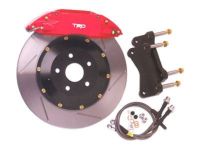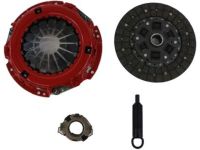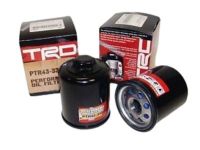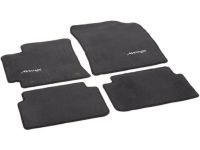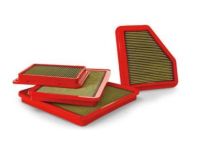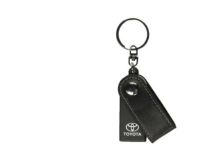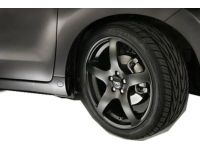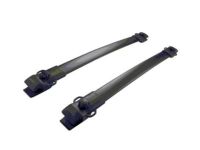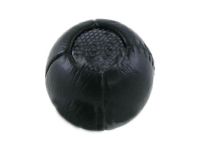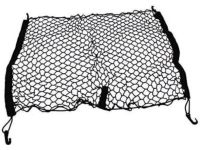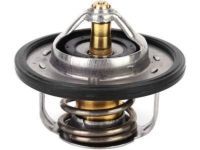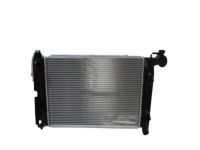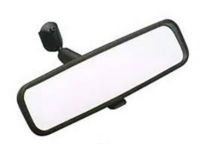

Why choose ToyotaPartsDeal
- High-Grade Parts
The best site to buy Toyota Matrix genuine parts for years has been ToyotaPartsDeal.com. We're the best online store for genuine parts. Toyota Matrix parts you could ever need are available here at the finest quality and best value on the web that will have your vehicle performing past its limits.
- Value For Money
What makes us the best choice for OEM Toyota Matrix parts? You get tremendous savings because our goal is to offer unbeatable prices. At ToyotaPartsDeal.com, Our products offer the same performance and reliability as their OEM counterparts without having to break your wallet.
- Quick Delivery
Everything you need for routine maintenance and repair can be found in our complete Toyota Matrix parts catalog. Having the best OEM parts inventory available, the parts for your vehicle will arrive fast no matter your location in the nation. You'll be back on the open road before you know it.
Popular Genuine Toyota Matrix Parts
- Power Train/Chassis Parts View More >
- Body Parts View More >
- Engine/Fuel/Tool Parts View More >
- Electrical Parts View More >
Shop Genuine Toyota Matrix Parts with ToyotaPartsDeal.com
Toyota Matrix, also called as Toyota Corolla Matrix, is a compact hatchback manufactured by Toyota from 2002 to 2014. The first Toyota Matrix was introduced in 2002 as a 2003 model. It had been produced through two generations until it stopped production in 2014. The first generation Toyota Matrix (E130; 2003-2008) was introduced as a 2003 model in 2002. It was available in four sub-models: Standard (2003-2008), XR (2003-2008), XRS (2003-2006), and M-Theory (2007). Those sub-models were powered by either a 1.8 L 123-130 hp inline 4-cylinder engine or a 1.8 L 164 hp to 180 hp inline 4-cylinder engine equipped with a 4-speed automatic transmission and 5-speed and 6-speed manual transmissions. On October 31, 2007, Toyota unveiled the second-generation Matrix (E140; 2009-2014) at the Specialty Equipment Market Association (SEMA) show. There were only three trim levels available: Standard (Base), S, and XRS in the US. While in Canada, it had Base, XR, AWD, and XRS. It added a new 2.4 L 158 hp inline 4-cylinder engine and the 6-speed manual transmission was replaced by a 5-speed automatic transmission.
As mileage accumulates on the Toyota Matrix, it's common for certain issues to arise, as auto parts wear out over time. The most frequently reported problem is engine failure, characterized by misfiring, rough idling, surging, hesitation, starting difficulties, reduced acceleration, increased fuel consumption, unusual engine noises, and an illuminated Check Engine Light. These symptoms could indicate failing air filters, oil filters, spark plugs, oxygen sensors, or drive belts. Another issue is premature suspension and braking failure, with symptoms like bottoming out, excessive noises from the front or rear end, grinding noises while turning, and damage to front tires, brakes, and suspension parts. This may be due to issues with the coil spring insulator, strut housing, wheel bearing, shock and strut mount, or trailing arm bushing. Braking failure could stem from problems with the brake disc, brake pad set, brake shoe set, brake drum, or brake caliper. To keep the Matrix in good condition, pay attention to other components such as seat belts, door handles, wiper blades, headlights, and fog light bulbs, which play crucial roles in safety, accessibility, and clear visibility in adverse weather conditions.
OEM parts are made and tested to Toyota's official factory standards. They go through the strict manufacturing processes to maximize perfections. Our website carries a huge inventory of OEM Toyota Matrix parts at the lowest price for your selection. We promise all genuine Toyota Matrix parts come with a manufacturer's warranty, so you have no need to worry about quality and reliability. Order now and your brand-new parts can be received at your door step with our quick delivery times.
Toyota Matrix Parts Questions & Answers
- Q: How to Replace the Thermostat of Cooling System for your Toyota Matrix?A: Do various checks, check the coolant level, and the drive-belt tension, and the temperature gauge. The previous information will help you determine if the thermostat is faulty or not. If the engine fails warm up it can be that the thermostat is stuck open but if the engine runs hot and the radiator hose does not heat up the engine may overheat. To remove the thermostat, start by detaching the battery negative terminal and draining the coolant. Detach the alternator as well as the thermostat housing from the engine. Gently remove the thermostat and clean the sealing area. Install the housing, refill the cooling system, run the engine, and check for any leaks. Once you complete the replacement procedure, You should feel the radiator hose and if it is warm, that means that the coolant is flowing properly.
- Q: How to Test and Replace the Engine Cooling Fan Assembly and Relay on My Toyota Matrix?A: The Cooling Fan Assembly on these models is controlled by the Powertrain Control Module (PCM) through inputs from the coolant temperature sensor. To test an inoperative fan motor, check the fuses or fusible links first, then disconnect the electrical connector and use fused jumper wires to connect the fan directly to the battery. If the fan still doesn't work, replace the fan motor. If the motor tested okay but is still inoperative, the fault may lie in the relays, fuse, wiring, coolant temperature sensor, or PCM. To remove the fan, disconnect the battery cable, wiring connector, and coolant overflow hose, then unbolt the fan shroud from the radiator and lift the fan/shroud/coolant reservoir assembly from the vehicle. Hold the fan blades and remove the fan retaining nut (and spacer, if equipped), then unbolt the fan motor from the shroud. Installation is the reverse of removal.
- Q: How to remove and install a radiator for your Toyota Matrix?A: To remove the radiator, disconnect the cable from the battery's negative terminal, drain the engine coolant detach both the upper and lower radiator hoses from the radiator, and the reservoir hose from the radiator filler neck. For automatic transaxles, disconnect the cooler lines from the radiator, using a drip pan to catch any fluid and capping the fittings. Remove the Cooling Fan Assembly. Next, remove the two upper radiator mounting brackets. Carefully lift out the radiator, you can inspect it for leaks, damage, or blockage. You can clean debris from the radiator using tools like a soft brush, being careful not to bend the cooling fins. Installation is the reverse of the removal. Ensuring that the rubber mounts are in place on the bottom of the radiator. After installation, fill the cooling system with the appropriate mixture of antifreeze and water. Start the engine and check for any leaks. Allow the engine to reach its normal operating temperature, indicated by both radiator hoses becoming hot. Recheck the coolant level and add more if necessary. If your vehicle has an automatic transmission, check and add fluid as needed.
- Q: How to remove manually operated outside car mirrors and interior rearview car mirrors on Toyota Matrix?A: To remove manually operated outside mirrors, start by removing the control handle and detaching the mirror cover using a small screwdriver. Then, remove the three retaining nuts and detach the mirror. For power mirrors, unplug the electrical connector before removing it. To remove the interior rearview mirror, disconnect the electrical connector if it's lighted, and use a Torx screwdriver to remove the bolt in the mirror-mounting pad. Slide the mirror off the pad and reinstall in reverse order. If the mirror pad comes off the windshield glass, use an inexpensive kit to reinstall it and allow the proper interval for bonding before attaching the car mirror.


































